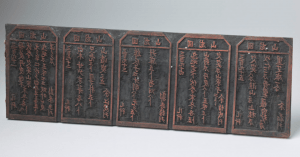This talk is about part of the book manuscript I am working on, Networking the Repetition: Formation of Collective Authorship through 1920 Korean Magazines. For situating the chapter better, I spare the first part of the talk to briefly outline the book. It aims to revisit the seemingly meaningless lexical, literary, and social repetitions in literary production, and examine how 1920s magazines mediated those patterns to shape the process of collective authorship-making, during the formative years of modern literature in Korea. In the second part, I trace the rise of the particular author figure, the prophetic critic, through the general interest-magazine for intellectual masses, Kaebyŏk (The opening, 1920-1926) by means of both qualitative and quantitative approaches. The latter approach particularly includes topic modeling, among others, as a means to investigate the semantic relations of the words in question and their co-occurring words based on a probabilistic model. The focus here is how quantitative methods can stretch our understanding of the magazine’s proto-leftist literature to connect its ideas about the Ch’ŏndogyo (the Heavenly Way religion) and to those of social reforms.
Jiayi Chen and Sabine Schulz
Co-coordinators, Art and Politics of East Asia Workshop

